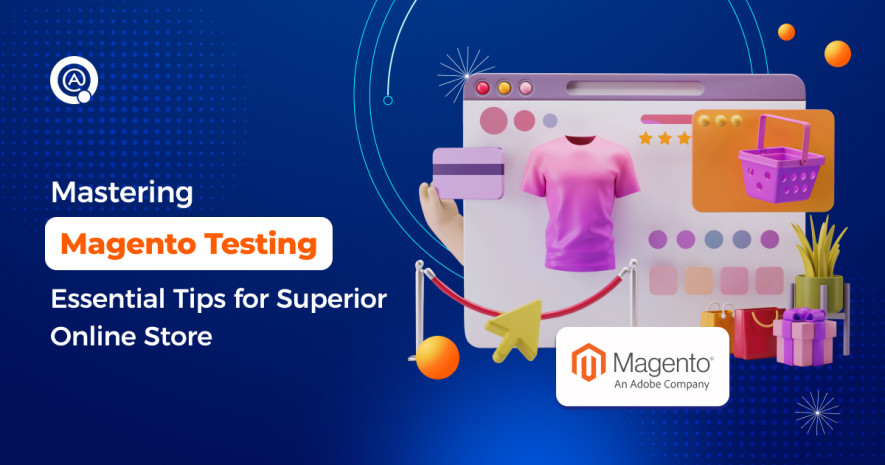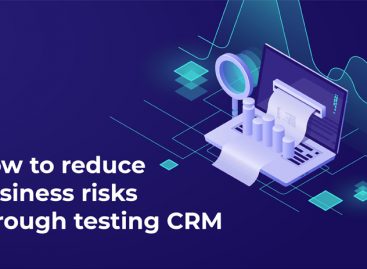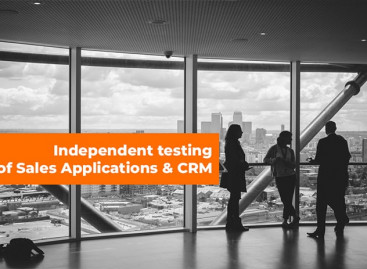- QATestLab Blog >
- QA for Business >
- Industries Insights >
- Mastering Magento Testing: Essential Tips for Superior Online Store
Mastering Magento Testing: Essential Tips for Superior Online Store

In the dynamic world of e-commerce, Magento continues to stand out as one of the most popular platforms for creating online stores. Its robust features, scalability, and flexibility make it the go-to choice for businesses looking to carve a niche in the digital marketplace. Recent statistics further reinforce its position: as of 2022, Magento powers over 250,000 active sites, accounting for around 2% of the global market share.
However, with great power comes great responsibility, especially in the sense of delivering a seamless user experience and uninterrupted performance. For developers of Magento-based stores, the challenge is not just in utilizing this platform’s extensive capabilities; it also lies in ensuring that every aspect of the online store functions flawlessly. This is where comprehensive testing becomes crucial. On top of bugless functionality, a well-tested Magento store is about crafting an engaging, intuitive, and satisfying shopping experience for every company you work with.
In this article, we will explore a number of actionable strategies and tips that will help you refine the store you created with the help of this platform. Join us as we discuss the critical role of thorough testing in the Magento ecosystem. Discover how you can turn your client’s online shop into an example of user-friendly design and efficient functionality, encouraging them to trust you with the success of their future projects.
A Short Guide for End-to-End Magento Testing
Considering all the intricacies of the e-commerce industry, the role of thorough testing in creating a successful Magento-based online store cannot be overstated. Whether you are gearing up for a new store launch, migrating from an older version of Magento, integrating with third-party systems, or adding new extensions, comprehensive testing is vital at all levels. A proper QA approach will help you ensure not only a seamless user experience but also the reliability and security of your client’s store. Let’s dive into these key areas, offering practical and technical tips to guide you through the testing process.

1. Pre-Launch Testing
As you and your client approach the launch stage of a Magento-based online store, it is time for final touches, including rigorous testing of every element to ensure that the shop debuts flawlessly. From verifying the functionalities to optimizing the user journey, the pre-launch stage is your opportunity to fine-tune the store to deliver exceptional experiences from day one. At this stage, we would recommend the following:
- Utilize a combination of manual and automated testing to cover all aspects of the store;
- Conduct thorough functionality tests to ensure all features, from product listing to checkout, work seamlessly;
- Implement UI/UX testing to guarantee a user-friendly shopping experience.
2. QA for Long-Running Stores
Even when an online store has been functioning smoothly for a while, continuous testing remains a critical element of its maintenance and growth. The digital landscape is ever-evolving, with new technologies, user expectations, and potential security threats emerging constantly. For long-running stores, regular testing is not just about fixing what’s broken; it’s about proactive improvement and adaptation. If a client wants you to maintain the quality of a Magento-based shop that has been active for some time, consider performing these QA activities:
- Conduct regular audits and health checks;
- Implement regression testing after updates or changes to ensure new modifications do not disrupt existing functionalities;
- Schedule periodic performance testing to maintain optimal load times and response rates.
3. Magento Migration Testing
Upgrading to a new Magento version often involves significant changes in the platform’s architecture. Testing ensures that all functionalities, both native and custom-developed, continue to work correctly in the new environment. Here are a few practical tips to make the most out of this process:
- Focus on data integrity testing to ensure complete and accurate data migration;
- Validate the compatibility of existing features and customizations in the new environment;
- Test for SEO preservation, ensuring that URL structures, meta-data, and other SEO elements are intact post-migration;
- Ensure that the look and feel of the store remain consistent post-migration by checking whether the store’s design and navigational structure are preserved in the new version.
4. Testing Integration with Third-Party Systems
Integration testing is a critical component of a comprehensive QA strategy for Magento-based stores. Real-world scenarios often involve complex interactions between various systems and their components and any bug in the process of their communication will directly affect customer experience. Speaking from experience, we suggest to perform the following tests:
- End-to-end testing of data flow between Magento and external systems like CRM and ERP;
- API testing to ensure secure and efficient communication between systems;
- Verification of data consistency and accuracy on both backend and frontend.
5. Testing Magento Extensions
Magento extensions often introduce new functionalities and features to an online store. Proper testing ensures that these add-ons not only integrate seamlessly with the core Magento platform but also function as intended without causing disruptions or conflicts with existing features. Verification of these components is essential for maintaining the overall stability and security of the store since poorly tested extensions can lead to vulnerabilities, performance issues, or a compromised user experience. Let’s explore some helpful tips that will facilitate the quality assessment of Magento extensions:
- Conduct functional tests to ensure that the extensions meet specified requirements and integrate seamlessly with the core Magento platform;
- Implement security testing to safeguard against vulnerabilities that extensions might introduce;
- Perform cross-browser and cross-device testing to ensure extensions work uniformly across different user environments.
6. Performance Testing
Performance testing is vital for Magento stores to ensure they can handle the demands of high traffic and complex transactions efficiently. By simulating various load conditions, it identifies potential bottlenecks and scalability issues, ensuring the store remains responsive and reliable during peak times, such as sales or holiday seasons. Here’s how you can ensure the uninterrupted performance of an online store built on Magento:
- Regularly conduct load testing to ensure the store can handle peak traffic without performance degradation;
- Monitor and optimize page load times and responsiveness under various load conditions.
7. Security Testing
Security testing for Magento stores helps to protect the software and its users against cyber threats and data breaches. It involves scrutinizing the shop for vulnerabilities that could be exploited by attackers, ensuring robust protection of sensitive customer data and financial transactions. For this type of testing, our experts recommend the following practices:
- Perform vulnerability assessments and penetration testing to identify and mitigate potential security risks;
- Ensure compliance with data protection and privacy laws, particularly for customer data.
8. Mobile Responsiveness and Cross-Platform Testing
With the growing prevalence of mobile and multi-device usage, it is crucial that these stores function seamlessly on smartphones, tablets, and desktops across various browsers and operating systems. This approach is important for attracting and retaining a wider, tech-savvy customer base. A couple of best practices that can help you perform efficient mobile responsiveness and cross-browser tests are:
- Verifying that layouts, features, and functionalities adapt effectively to different screen sizes and user interfaces by running tests on real gadgets instead of emulators/simulators;
- Check the store’s adaptability and functionality on different screen sizes and operating systems by conducting thorough compatibility testing.

Case Study: Decreasing a Store’s Bounce Rate with QA
In this chapter, we would like to illustrate how efficient testing for a Magento-based online store can make a significant difference for a business. Our client was a multinational company operating in the USA and Europe. There was a separate site for each country, localized and adapted to the specifics of the region. The company sells lingerie under multiple brands. The client received bad feedback about the purchasing process, as a result of which they lost income and image. Marketing expenses grew but did not give the expected result. Due to the lack of competencies, their tech team could neither detect nor solve the problem independently.
This is why this company hired us to help them cope with the following tasks primarily:
- to accelerate the discovery and resolution of problems with the purchasing process as soon as possible;
- to get perfectly working versions of the site for mobile devices (test UI / UX, web, and mobile versions);
- to create automated tests with the aim of reducing the time to identify errors in the future;
- to boost the overall quality of their online lingerie shop.
Implementation
To meet the needs of our client, we took the following steps:
- Our company has allocated 5 full-time testers having experience with testing e-commerce sites, mainly built on Magento;
- Since the development was very intense, with frequent releases, our team adjusted to the dynamics of the project and went to work earlier in the morning to keep up with the client’s timeline;
- We provided regular testing on mobile devices, constant improvement, and UI / UX testing of extended versions of sites and mobile versions;
- Our testers wrote high-quality documentation for the product, which made the QA process more organized and transparent;
- Our QA engineers developed automated tests that covered the main functionality required for regression testing, based on the documentation written previously by manual testers.
Tangible results for the client
As the result of involving our team to help the client deal with QA issues, they received benefits, including:
- discovery and resolution of a bug in the purchasing process, after which the bounce rate on the site decreased by 40%;
- increase in the number of orders made from mobile devices by 7%;
- prevention of persistent bugs in new product versions, which led to successful releases.
- reduced onboarding time and costs for new employees by almost 50%;
- acceleration of regression testing and decreased labor costs of the manual QA team.
As you can see, this case study is a perfect example of how expert testing can enhance both the performance and user experience of Magento stores, ultimately driving business growth and customer satisfaction.

Final Words
From initial deployment and ongoing maintenance to platform migration and feature enhancements, a comprehensive testing strategy is key to creating a successful Magento-based online store to satisfy modern shoppers.
However, verification of such software is a complex task requiring not only robust QA expertise but also background on Magneto itself. QA engineers who are familiar with the platform work more efficiently and much faster, and can help you build proper testing processes from the ground up or improve the QA procedures that were already established. Take full advantage of that fresh perspective on your online store with independent testing. Leave us a quick message about your e-shop or online marketplace and we will provide you with a customized service package adjusted to your needs.
Learn more from QATestLab
Related Posts:
- Don’t Lose Sales: The Importance of User-Friendly and Accessible Design for an Online Store
- Magento for e-Commerce projects: Testing Cases from QA Engineers
- 8 Magento Store Mistakes That Lead to The Loss Of Profits
About Article Author
view more articles






